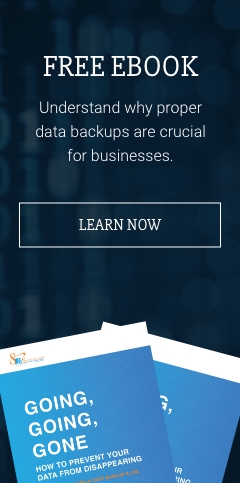Today's businesses rely heavily on IT systems for their operations, from ordering supplies to processing payments. Unfortunately, these systems can malfunction because of hardware failure, internet service provider issues, natural disasters, or cyberattacks. And when IT downtime occurs, the effects can be devastating for businesses.
Loss of data
If your company uses data to make business decisions, losing even a portion of it due to IT downtime can be a huge blow to your operations. A great way to minimize the impact of data loss from IT downtime is to have a data backup and recovery plan. This way, if data is lost, it can be recovered quickly.
Loss of productivity
During downtime, your employees can't access the applications, platforms, data, and other resources they need to do their jobs. If they can't get any work done, some of them may feel frustrated and stressed out. Some employees may also have difficulty refocusing after a long time of inactivity, causing them to miss their deadlines.
While having a backup and recovery plan mitigates the risks of downtime, there are some business tasks that can’t be done offline. That's why it's important to resolve IT issues swiftly. Otherwise, productivity can plummet and may even lower employee morale, which can lead to even more problems for your company.
Loss of revenue
If your company relies on eCommerce or other online transactions, an IT outage can negatively impact your revenue. For example, in 2015, Apple suffered around $25 million in lost sales when the iTunes Store and App Store were down for 12 hours. In 2019, Facebook experienced a 14-hour blackout that cost them an estimated loss of $90 million. If losing access to critical IT systems can lead to a massive revenue loss for enterprises, imagine how catastrophic it could be for small- and medium-sized businesses.
To avoid these scenarios, you need to have a plan in place for how you'll continue to do business during an IT outage. For example, you could set up manual processes for taking orders and payments. Or, if you have a brick-and-mortar store, you could direct customers there until your website is back up and running.
Loss of clients
If your employees can't access your IT systems during an outage, they may not be able to serve or assist your customers. Any disruption to your client-facing systems can greatly affect your customers' experiences. And if clients can't get hold of your products and services or request support, they may move their business elsewhere.
Therefore, you need to have a contingency plan for how you'll communicate with your clients in the event of an IT outage. For example, you could send them a text message letting them know what's going on and when they can expect service to be restored.
Penalties, fines, and legal costs
If you're bound by service level agreements and you fail to meet them due to IT downtime, then you may have to pay the corresponding penalties or offer a discount on your service fee. You may also suffer costs related to noncompliance penalties, litigation, and settlements if you're in a highly regulated industry like healthcare and financial services.
The best way to avoid these consequences is to be proactive by implementing measures that prevent the common causes of IT downtime. You must also have a plan for how to respond if an outage does occur. Finally, after an outage, discuss what happened, its impact, what steps were taken to mitigate and resolve it, and what you should do to prevent it from happening again.
IT downtime is inevitable, but Safebit can help you minimize its impacts on your company. Find out how we can do just that by reading our FREE eBook.


